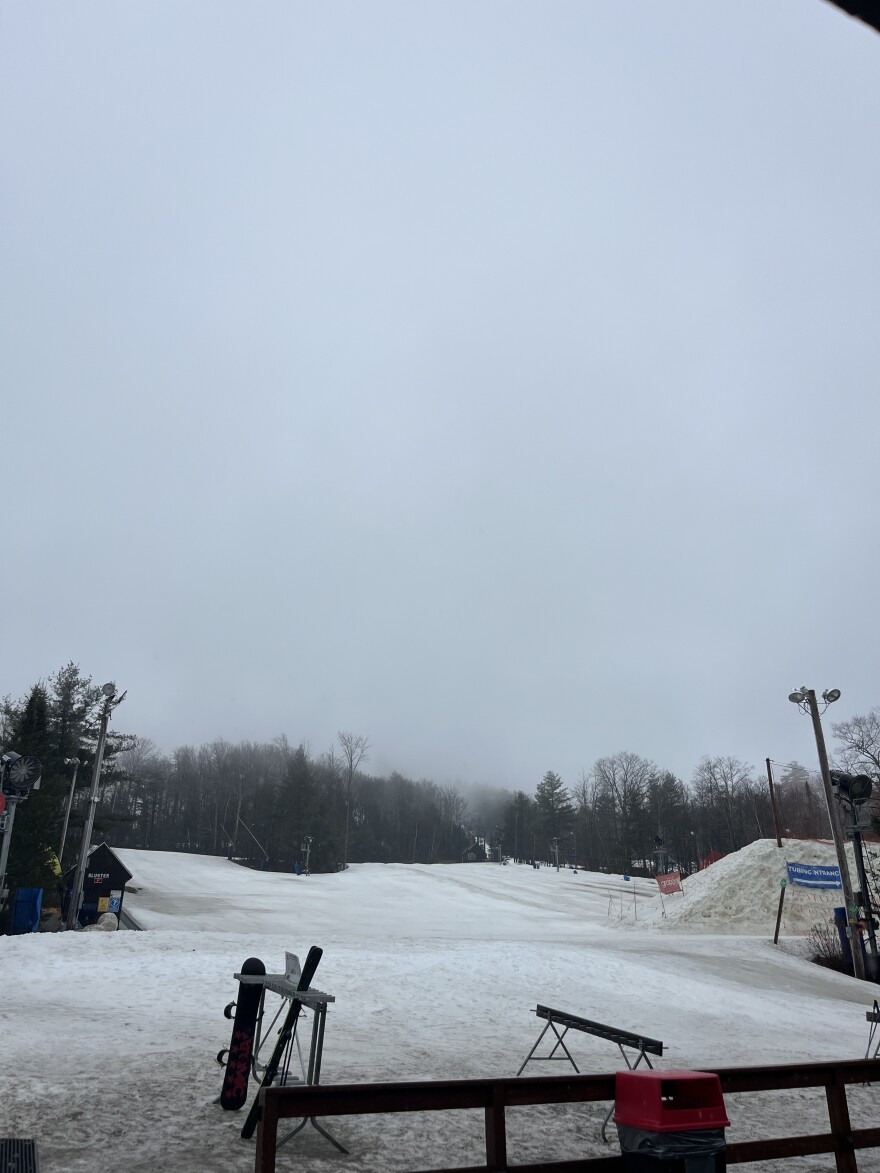During a typical winter, Whaleback Mountain in Enfield will see around 100 inches of snow. This year, it only received 27 inches, according to John Hunt, the mountain’s executive director.
“All of our snowpack is man-made snow that our ops team produced,” Hunt said. “If we didn't have that, we wouldn't have opened this year.”
Whaleback hoped to stay open until March 17, but warm temperatures and heavy rain turned the slopes “soupy,” Hunt said, forcing the mountain to close its lifts this week, ahead of schedule. The early closure follows a late start to the season because the mountain struggled to keep its man-made snowpack intact during a warm December and January. It did not fully open until a week later than initially planned.
It’s not uncommon for spring skiing to last into April during years with more favorable snow, but this year many resorts – especially ones in the southern part of the state and with less robust snowmaking capabilities — will likely end the season in March. Black Mountain in Jackson and Crotched Mountain in Bennington also suspended their lifts this week due to snow conditions, but they plan to reopen.

Jessyca Keeler, president of Ski New Hampshire, said the current conditions feel acutely challenging. “This weather feels very abnormal for this time of year,” she said.
The added presence of El Niño made this season especially warm. But according to scientists, the conditions seen this winter could become more of the norm in New Hampshire, as humans continue to contribute to climate change by burning fossil fuels and releasing greenhouse gasses into the atmosphere.
Still, even as rain falls on the slopes instead of snow, some mountains anticipate being able to stay open through the entirety of their planned season. Loon Mountain, one of the largest resorts in the state, expects to be open through mid-April, according to its communications director Taylor Siewierski.
Lori Rowell, marketing director for Pat’s Peak in Henniker, said the mountain’s combination of snowmaking and strategic grooming technology will likely keep them open through the end of March, their typical closing time.
With little to no snow on the ground across many parts of New Hampshire and the rest of southern New England, Rowell said people often underestimate the conditions at Pat’s Peak.
“It is fun to see so many people come here and be surprised by how much snow we have, because they don't have it at their house,” she said.
Keeler echoed the impact of the so-called “backyard effect” – the phenomenon of potential skiers staying home when they don’t have snow in their own backyards.
“People stop thinking about skiing and then it becomes a challenge to get people to come up,” she said. “And then it turns into more of an economic question, as opposed to ‘do we have enough snow to be open?’ question.”
Both Keeler and Hunt emphasized that artificial snow has long been a crucial part of the skiing industry in New Hampshire and will likely take on an increasingly crucial role if winters continue getting warmer and wetter. This will pose an economic burden for many mountains, as snowmaking technology is expensive, especially compared to natural snow.
“Mother nature doesn't cost anything,” Hunt said
The potential downsides of more artificial snow are more than just economic. Some skiers say it does not feel the same as natural snow fall and can be more difficult to navigate. That was the sentiment among Nicole Goupil, who visited Pat’s Peak with her family on Tuesday and said she much preferred real flakes to the “little crystal things.”
“When you ski on it, it feels worse than real snow,” she said.
The Goupils left the mountain a few hours earlier than they intended after heavy rain turned the slopes “slushy” and left them soaked. They purchased Indy passes for the season, which they used to ski at smaller resorts across New England this winter. Stephan Goupil said they broke even on their passes but had hoped for more snow. He anticipated Tuesday would be their last day skiing for the winter, due to the “patchy” conditions at mountains across the region.
But other skiers emphasized they don’t need perfect snow to appreciate a day out on the slopes.
“It’s preferable to have natural snow, but it's fine either way,” said Isaac Feinhaus, who was also hitting the slopes at Pat’s Peak with family earlier this week. “I just like to get out and be active.”








